English
No Need to Begin from the First Temple!
Start Your Tokushima Pilgrimage Journey with Ease.

A journey that takes about 45 days on foot, covering a distance of approximately 1,400 kilometers.
This is the full pilgrimage route of the "Ohenro" (pilgrimage).
When we think of a pilgrimage, it may seem difficult, but actually, today the "Ohenro" (Pilgrimage) is not just for dedicated pilgrims. People from all walks of life are participating in the pilgrimage for various purposes, such as experiencing the nature and history of Shikoku, or for health reasons. Through the Ohenro, you can discover the charm of Tokushima and the rest of Shikoku.
It’s easy to feel like you want to try the pilgrimage now, right? Let’s introduce the appeal of Ohenro that even beginners can easily enjoy.
What is Ohenro (Pilgrimage)?
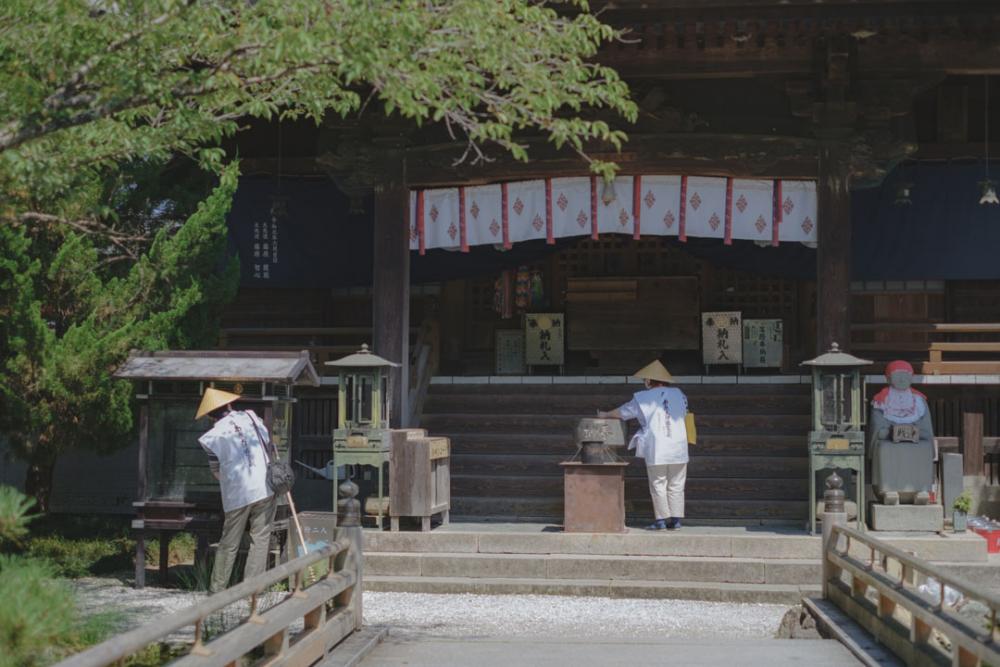
"Ohenro" refers to the pilgrimage to the 88 sacred temples across Shikoku, known as the "Shikoku 88 temples Pilgrimage," which is said to have been walked by the famous monk, Kobo Daishi, about 1,200 years ago. It is believed that by completing the pilgrimage, one can rid themselves of worldly desires and receive spiritual benefits.
There are no strict rules on how to complete the pilgrimage, but it is typical to start from the first temple in Tokushima, "Ryōzenji", and follow the numbering system in order. However, in recent years, it has become popular to split the pilgrimage into sections, completing it over weekends or holidays for a more leisurely experience.
Additionally, while the traditional image of Ohenro includes traveling on foot, pilgrims can also use bicycles or buses. The iconic pilgrimage items such as Kongouzue (Pilgrim’s staff), Fudogeza (Buddhist stole), Hakui (White robes), Sugegasa (Sedge-woven hat), and Zudabukuro (Cloth bag of Buddhist monastics) are often associated with Ohenro, but you can still participate in casual clothing as long as you maintain a respectful attitude toward Kobo Daishi.
Let's get the essential Tools for the Pilgrimage
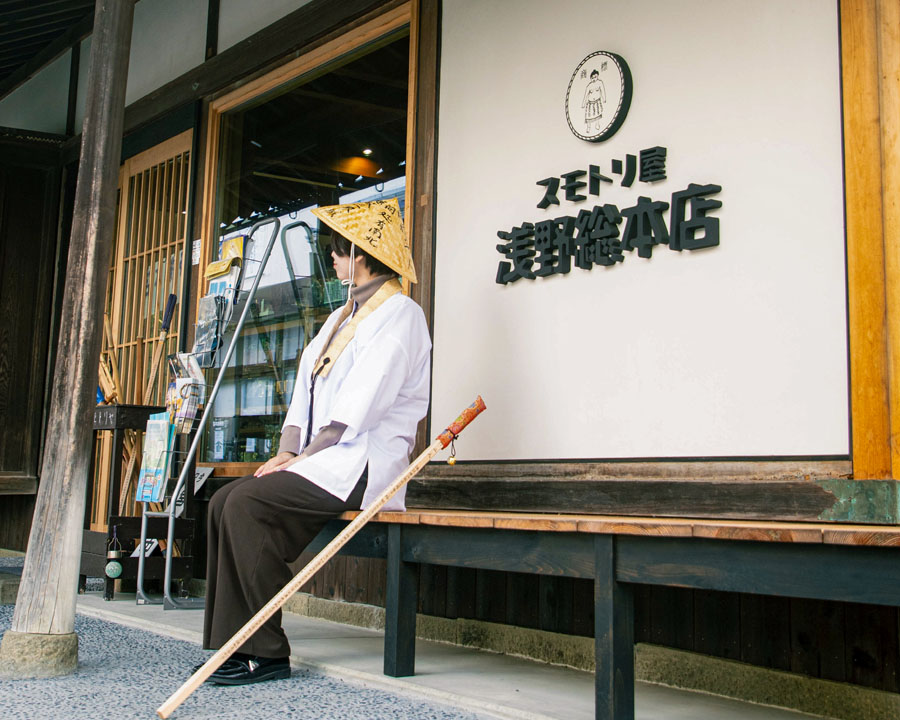
While more people are enjoying the pilgrimage in casual clothing, adopting the traditional style can provide opportunities to interact with the local community as an "Ohenro-san" (pilgrims). If you’re looking for the proper gear, we recommend visiting a long-established store in Awa City.
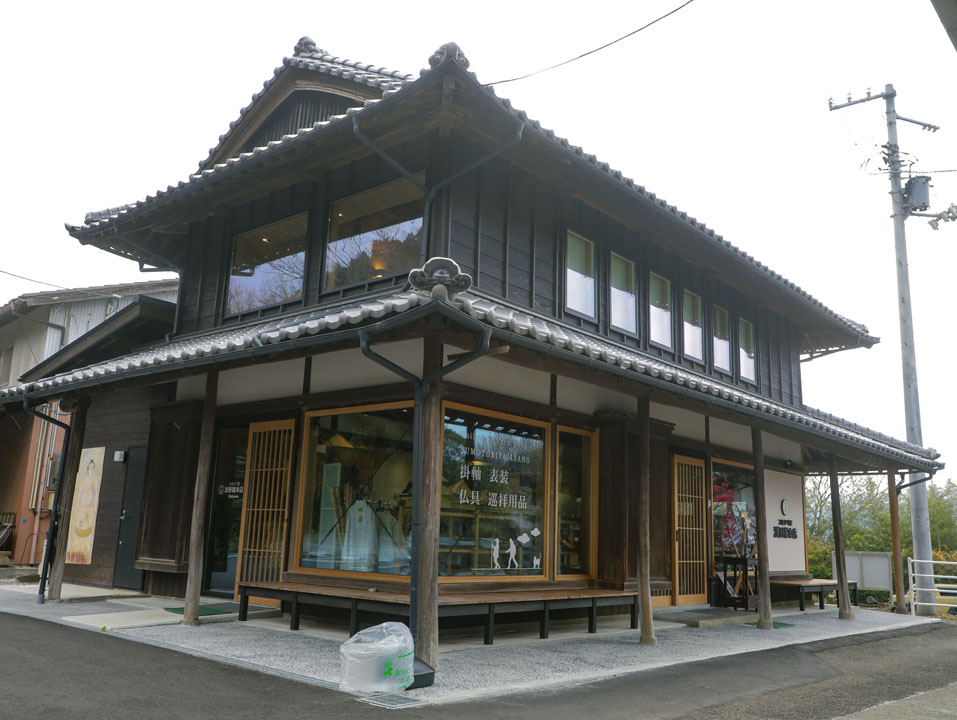
Located along the path to the 10th temple of the 88 "official" temples of the pilgrimage, "Kirihataji", is "Sumotoriya Asano Sohonten store," a specialized store that has been supporting pilgrims for over 130 years. With a wide selection and reasonable prices, this shop offers everything you need for your pilgrimage. They stock traditional Hakui (White robes) ,Kongouzue (Pilgrim’s staff), Sugegasa (Sedge-woven hat), Juzu (prayer beads), and Colorful circular Kesas simplified from Wakesa (traditional robes), making it perfect for both first-timers and experienced pilgrims.
In addition, they offer English-speaking assistance to help foreign pilgrims feel at ease while on their journey. It’s a wonderful place to stop by and experience the culture of pilgrimage and the warmth of Shikoku's hospitality during your travels.
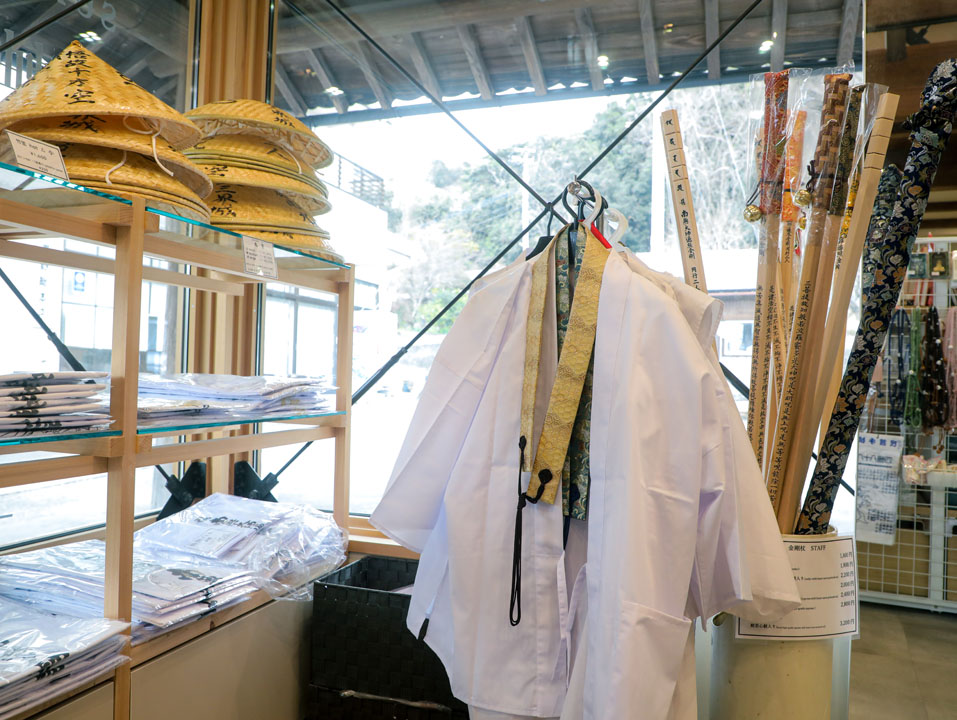
■Sumotoriya Asano Sohonten store
Address: 173 Kannon, Kirihata, Ichiba Town, Awa City, Tokushima Prefecture
Business Hours: 7:30 AM - 5:30 PM
Closed: New Year’s Days (※There are also irregular holidays)
Website: https://www.sumotoriya.com/
Let's Visit the Temples in Person
Temple No. 7: Jūrakuji
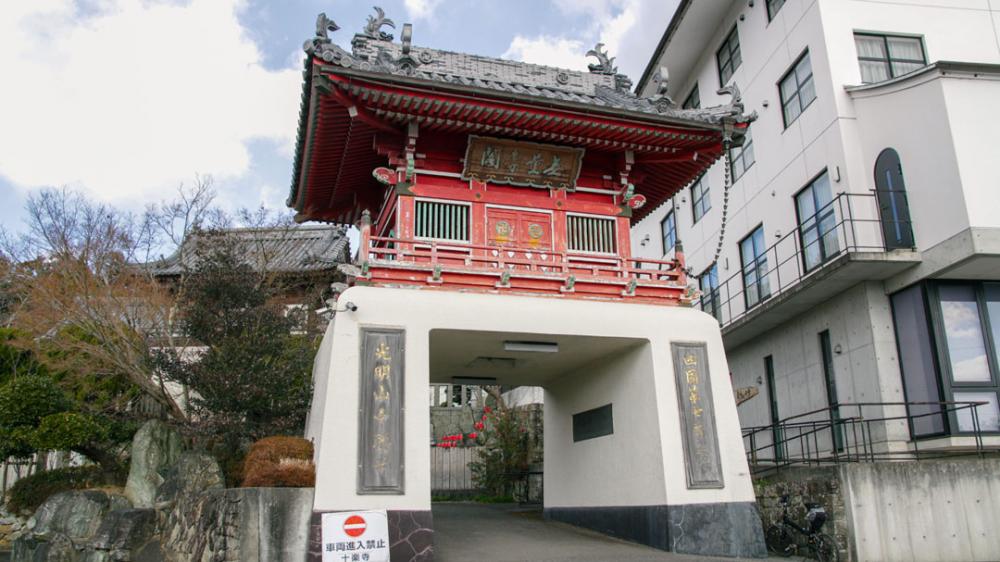
Once you're dressed in your pilgrimage attire, it's time to embark on your journey to the temples. Many temples have photogenic spots, and you’ll find that the Sanmon (Niohmon Gate), believed to be the entrance to sacred Buddhist realms, are often distinctive and beautiful.
Among them, Jūrakuji, the 7th temple in the Shikoku Pilgrimage, stands out with its impressive vermilion-painted ShōrōmonGate (gate with a bell tower), which evokes the feeling of a majestic dragon palace. The name "Jūrakuji" was given by Kobo Daishi with the hope that people would be freed from eight types of suffering and receive ten types of light and joy.
Additionally, Jūrakuji is famous for its blessings of good relationships. The temple enshrines Aizen Myo-o, the deity believed to bless not only romantic love but also success in work, friendships, and other types of relationships. The temple’s Chumon Henshoden hall has two entrances, each serving a different purpose. For those wishing for good relationships, it’s customary to enter from the left, and for those hoping to cut off negative relationships, they should enter from the right.
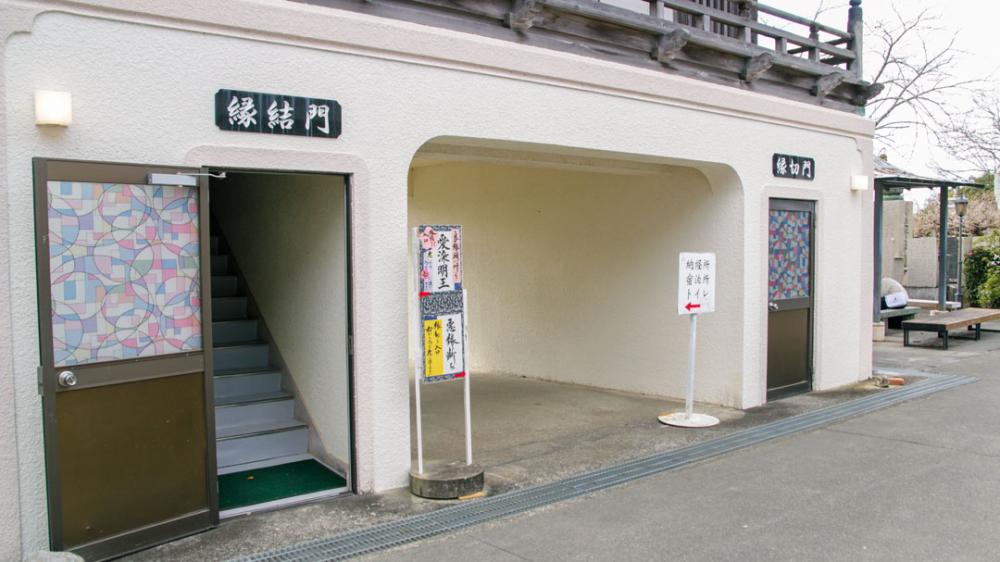
Additionally, the temple offers a unique type of omikuji (fortune slip). The Kasa-mikuji, shaped like a tiny umbrella, reveals your fortune when opened. It can be a fun way to seek blessings while discovering your luck.

■Jūrakuji
Address: 58 Hokyoden, Takao, Donari Town, Awa City, Tokushima Prefecture
Website: https://jyuurakuji.com/
Ohenro-san's Helpful Companion:
Henro Goya (Pilgrim Hut)
For pilgrims walking the Shikoku 88 Temples pilgrimage, rest stops known as " Henro Goya (Pilgrim Hut)” are incredibly helpful. These are places created by local people with the intention of supporting the pilgrims. There are a total of 89 Ohenro Rest Stops, and today, we'll introduce three of them.
Kukaian Kirihata (Awa City)
A rare two-story rest stop! With solar-powered lighting, pilgrims can feel safe resting here even at night.
■Location: Shinnoike, Ohnokima, Ichiba Town, Awa City, Tokushima Prefecture

Kawashima (Yoshinogawa City)
Located at the base of the Kawashima submersible bridge, this is a perfect resting spot on the way to the 11th temple, Fujiidera. Enjoy the view of the bridge as well.
■Location: Kawashima, Kawashima Town, Yoshinogawa City, Tokushima Prefecture
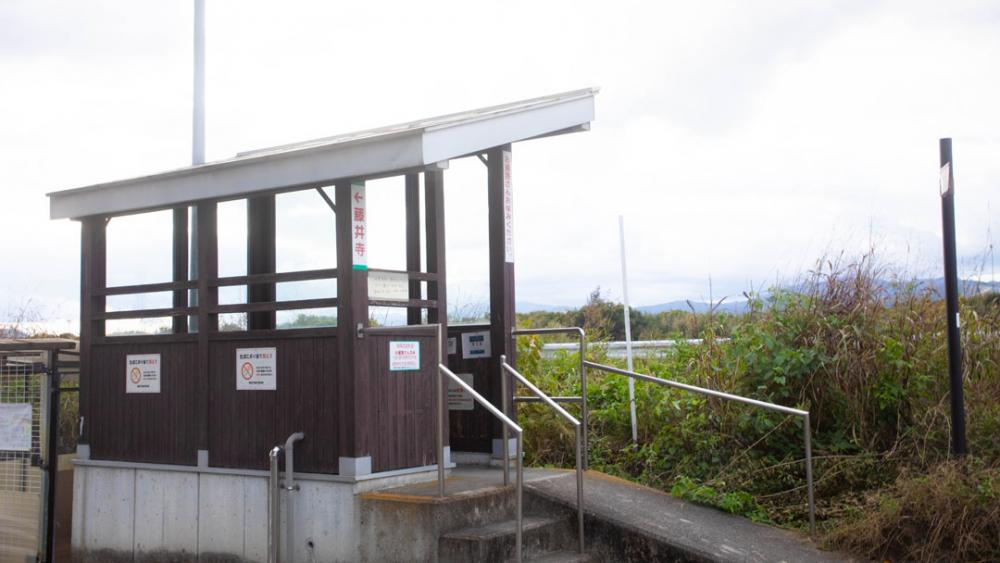
Bizan (Tokushima City)
This Pilgrim Hut is located in front of the Awa Odori Kaikan (Awa Odori Museum). The roof is designed to resemble the traditional hats worn by Awa Odori dancers, giving it a distinctive Tokushima feel.
■Location: 2-12 Shinmachibashi, Tokushima City, Tokushima Prefecture
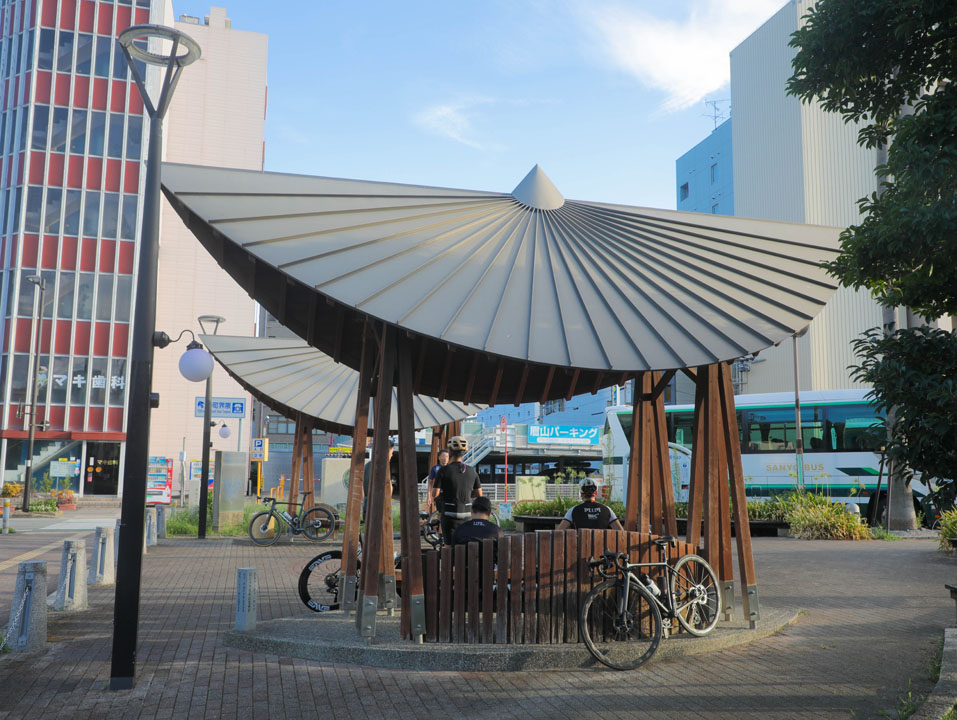
These Pilgrim Hut can be found throughout Tokushima, offering a perfect place to relax during your journey and experience the warmth of the local community. Next time you spot one, take a break and enjoy the hospitality!
Essential Lodging for Your "Ohenro" Pilgrimage Journey:
Morimoto-ya
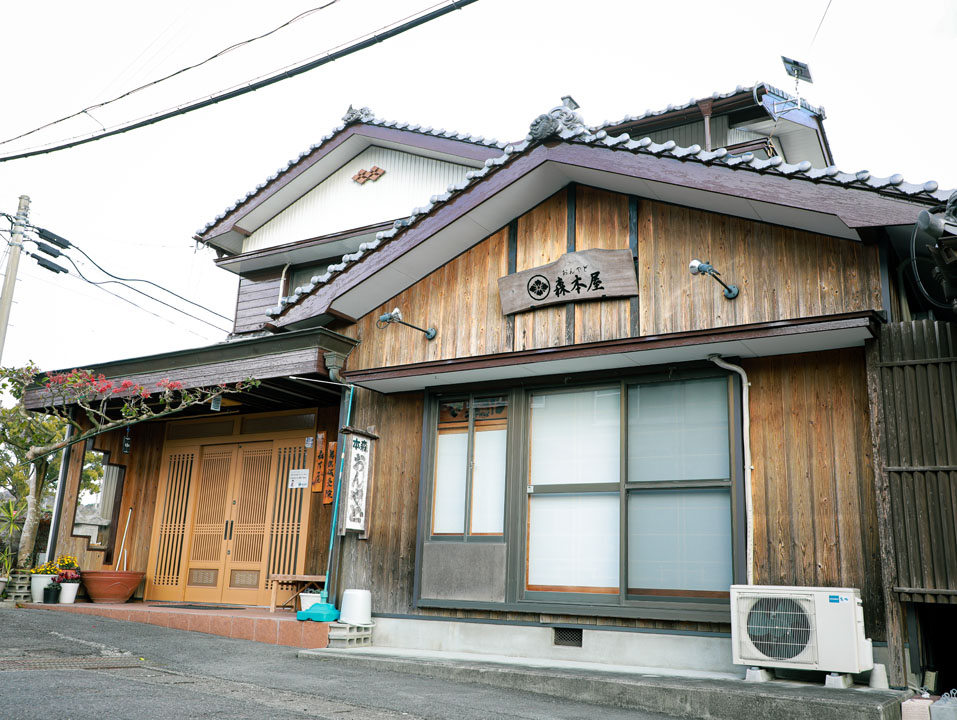
To complete a long "Ohenro" pilgrimage, a comfortable place to rest is essential. Many inns are conveniently located near temples and are well-equipped to support pilgrims, offering great facilities and hospitality. One such inn is Morimoto-ya, located right in front of the 5th temple, Jizo-ji.
Morimoto-ya is a historic inn with over 100 years of history, now run by the 5th generation of owners. The inn has been renovated from an old traditional house, preserving the original beams and architecture that offer a nostalgic, cozy feeling. Outside, you’ll find a "suikinkutsu" (a type of Japanese garden ornament and music device), and through a round window in the shared space, you can enjoy the tranquil atmosphere. It’s the perfect place to relax, heal from your journey, and enjoy the warmth and hospitality of the area.
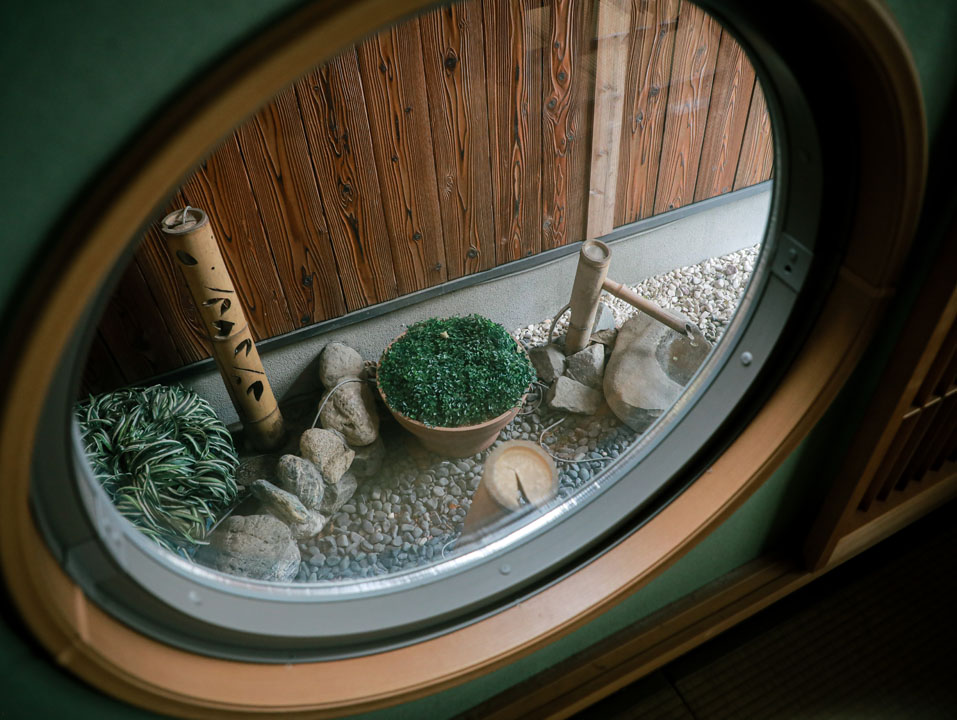
■Morimoto-ya
Location: 60-1 Nogami, Rakan, Itano Town, Itano District, Tokushima Prefecture
Website: https://www.morimoto-tokushima.com/
How was it? You may now see that "Ohenro" is not as difficult or distant as it may have once seemed. It’s a journey that anyone can enjoy without pressure, and soon the weather will be just right for walking.
Why not take a trip to Tokushima this year and try your hand at the "Ohenro" pilgrimage?
